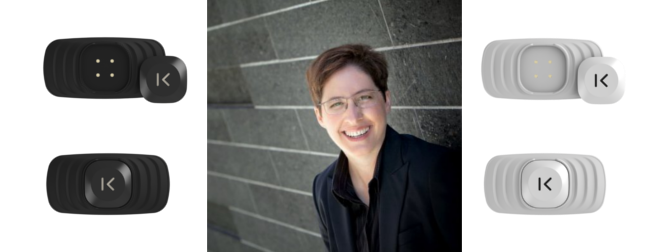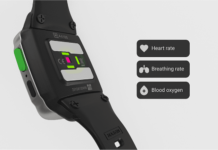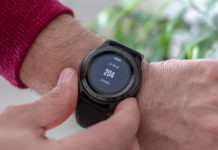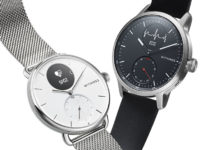WT | Wearable Technologies had an in-depth conversation with the CEO of Kenzen, Sonia Sousa, to discuss how their wearable patch is spicing up the market. We have provided the interview below.
Kenzen has recently emerged on the wearable market. Can you explain what the Kenzen team does and what your wearable device is?
Kenzen believes for wearables to deliver value they must reliably measure physiology – beyond monitoring vital signs – to enter the clinical realm. We are looking at a comprehensive solution that includes both disposable sensors and a rechargeable monitor, all in the form of an adhesive patch. The Kenzen smart patch can be worn on the body in locations that measure the best ECG, respiration, temperature and sweat signals.
Hydration is really important as an underlying condition of health. Having a patch that has both solutions, vital signs and recognition of biomarkers in sweat, allows for Kenzen to be relevant in clinical situations. It is important that we have a comprehensive system that can be customized to the user.
How does your innovative technology differentiate from other wearables?
Nobody has been able to accurately assess hydration level, so we looked at that in the beginning. If you are attempting to detect heat stroke, then you need to measure hydration, body respiration and temperature. The ability to track and monitor multiple conditions is what we aim for – to provide clinical relevance for the long term.
There are a lot of people talking about patches, because it is novel to have wearable monitoring technologies located on any part of the body. But to make the patch invisible, and non-intrusive with one’s lifestyle, is a differentiation that sets Kenzen patch from other solutions. The second is the ability to continuously collect vital signs and biomarkers in sweat – in real time. That is incredibly different. It is true that there are a few companies looking at sweat, but no patches on the market yet.
Even so, we have spent a lot of time designing a wearable that can be upgraded, because we know that technology is moving at a fast pace. New sensors are being developed rapidly. When a company is committed to a form factor, and the sensors inside change – you need to redesign a lot of things (PCB board, casing), and sell a completely new version of the device. With the Kenzen patch, our sensors are disposable. When you are ready to re-order, we can offer you an upgraded version, with no change to the monitor you already own. We are creating a bridge between hardware and software by connecting the patch sensors to a microcomputer for more capabilities.
Lastly, we are really good at doing data analytics and physiological monitoring. Since customization is extremely valuable for the consumer, our approach provides an opportunity to combine unique sensors and algorithms for reports and notifications that are most important for our users.
Most wearable engineers are creating their bio-metric monitoring devices inside plastic casings; what inspired the Kenzen team to make the Echo in the form of a patch?
We have talked to a lot of people – physicians, athletes, labor workers – to gain their perspective. What we quickly understood was that Kenzen needed to be clinically relevant, and highly accurate. Beyond that, we learned that users are not going to wear a monitoring device everyday unless it was very easy to use and wear. The obvious choice was a patch. Secondly, we understood that having it be disposable allows for Kenzen to be scalable, which is important to stay relevant in this market.
What customer segment has shown the most interest in purchasing the Echo?
It’s pretty amazing – we have contracts in place with risk management companies to improve safety and health of workers that are working in extreme conditions. It is imperative companies make worker safety a priority, and this is now possible by measuring physiological data and environmental conditions. Our first application is injury prevention for athletes and workers in extreme conditions.
Secondly, we’re focused on customers that do not have a chronic condition but show signs of risk or have a family history of disease. Kenzen can provide assistance to these customers’ lives by predicting and pre-empting negative health events.
You will be stepping to the stage at WTeu16 – what about the conference are you most excited about?
My co-founder and I are excited to celebrate this 10 year milestone with the WT | Ecosystem. You guys have created an amazing group. We are excited to hear and learn from the other speakers. More importantly, we think an ecosystem of companies can solve global healthcare problems and bring wearables technologies together to deliver meaningful health insights. I will be a sponge at WTeu16, learning and engaging, because I want to be a part of an ecosystem that wants to makes wearables relevant – and of course, I love Germany!
Lastly, what is your favorite wearable device?
The Kenzen patch, of course! But seriously, right now it is the Apple Watch. Having a microcomputer on your wrist is a perfect way to receive information. It is also exciting to see what the future may hold. I look forward to the day where I can leave my phone at home, but still able to connect and communicate with people – wherever they are.
If you feel inspired by the words of Mrs. Sousa, be sure to register for WTeu16 to hear her speak. The event is fast approaching- on January 26th in Munich, Germany. You can also sign up through the Kenzen website to receive the frist Echo Patch!

















